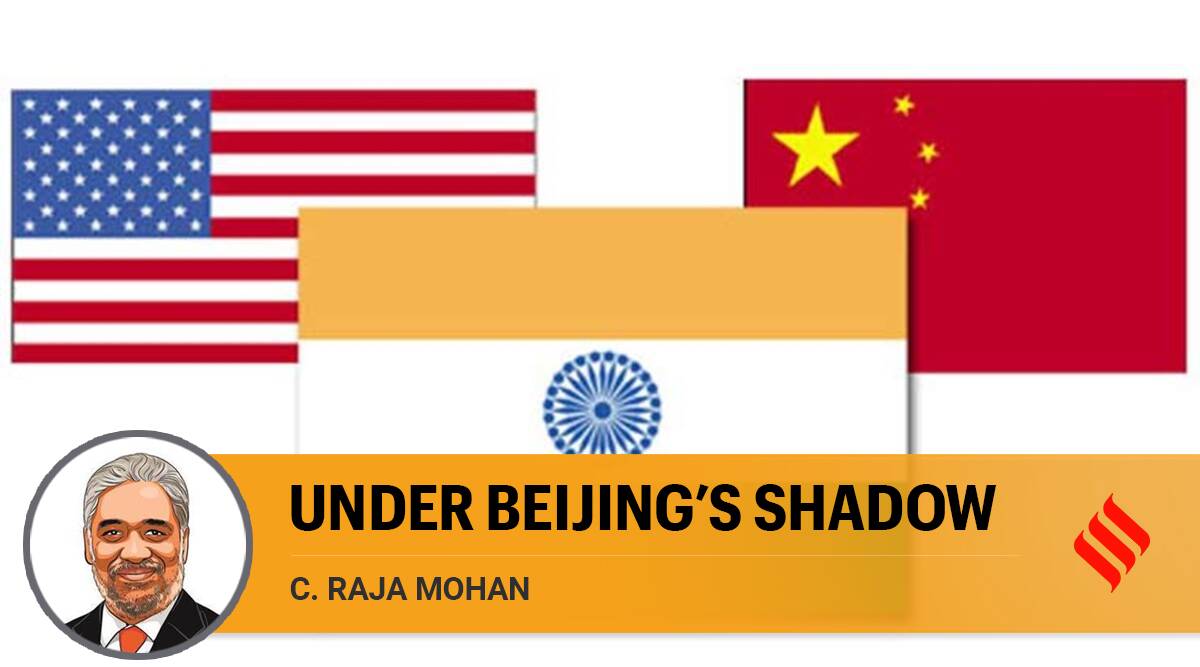China-Us Balloon Fracas
THE TRIBUNE
APLN member C Uday Bhaskar argues that for India, the ballon incident “would have important cues in relation to the current standoff across the Line of Actual Control (LAC) and the long festering, unresolved territorial dispute.” Read the original article here.
On February 9, the US House of Representatives unanimously backed a resolution condemning the recent incursion of a Chinese spy balloon into US airspace and described it as ‘a brazen violation of United States sovereignty’. The final vote tally was 419 for and none against. This unanimity over China is significant, given the deeply fractured political divide in the US legislature. It is also indicative of the bipartisan consensus over China that has been gathering traction in the US since the Trump era.
The troubled bilateral relationship between the US and China that had shown the potential for a slight degree of improvement with the resumption of high-level dialogue has gone rapidly south in a visibly discordant manner over the spy balloon. US Secretary of State Antony Blinken was scheduled to visit China in early February, but this has been aborted, even as Beijing has accused Washington of overreacting.
More details are emerging over what Beijing claimed was a civilian weather balloon that had gone off course and while a definitive conclusion is yet to be reached about the nature of the ‘violation’, this is a matter that has a relevance for all of China’s interlocutors, including India. Furthermore, this issue raises certain complex questions over the equitable and consensual management of the use of space as a domain and the demarcation between near-space and outer-space boundaries being part of the new global commons.
The exchange of sharp words and related acrimony between the US and China peaked with US President Joe Biden ordering that the truant balloon be shot down. The Pentagon carried out the task on February 4 by firing a missile at the balloon and bringing it down off the coast near South Carolina. This use of military ordnance by the US is a significant punctuation in the bilateral relationship and will pose a challenge to Chinese President Xi Jinping.
Two strands merit preliminary review. The first is the accusation by the US that the balloon in question is part of a vast fleet of such surveillance platforms used surreptitiously by the Chinese military and that the PLA has ‘conducted similar operations in over 40 countries across five continents’. This includes India and Japan among other nations.
While it is accepted that most nations with adequate capability do engage in surveillance and espionage activities regularly – the current Chinese balloon raises some intriguing questions. Such balloons, whether tethered or untethered, are widely used and classified as ‘near- space systems’ operating at altitudes between 20 and 200 km beyond the earth’s surface.
If indeed this was a civilian weather platform, as claimed by Beijing, it is not clear why it was being deployed at such distant ranges far away from China. And if there was a compelling meteorological reason for such deployment, Beijing could have informed the countries concerned about the trajectory of the wayward balloon, which would be determined by wind currents and space turbulence. This kind of transparency would have allayed any anxiety about the nature of such data-gathering (now seen as an intelligence mission surveillance) in those nations that have a security concern apropos of China.
That Beijing chose a degree of tenacious opacity over routine transparency in this matter has led to predictable doubts about Chinese intent and credibility. The assertion by the US that based on the imagery obtained from its U-2 spy planes, it has concluded that the equipment on the balloon was meant for ‘intelligence purposes’ and that this was inconsistent with ‘equipment onboard weather balloons’ adds to this perception about Chinese perfidy.
The second strand pertains to the manner in which the US and China have dealt with this issue of airspace transgression and the escalation that has been witnessed over the last fortnight, culminating with the US using a missile to ‘protect’ its sovereignty. It is more than evident that the US-China relationship is moving towards greater discord with seemingly intractable causal factors. This was amply reflected in the State of the Union Address by President Biden last week.
In one of the abiding paradoxes of the last decade, tension with China over what is perceived by many of its interlocutors as unambiguous belligerence and/or covert use of military muscle to snatch unilateral tactical advantage (viz South China Sea and Ladakh-Galwan) has not prevented a robust trade and economic relationship. The US, Japan and India are in a similar space and will need to evolve individual and collective approaches to prudently manage this contradiction.
For India, the manner in which Beijing deals with the balloon controversy, both with the US at the bilateral level and the global community, would have important cues in relation to the current standoff across the Line of Actual Control (LAC) and the long festering, unresolved territorial dispute. On the tactical plane, if the US allegation that the PLA has a vast fleet of surveillance balloons operating in near-space is indeed true, what does this mean for the LAC and the military standoff in the more contested regions?
On balance, it appears that there is more than hot air in the ballooning controversy and that it has set off angry inter-continental ripples for now.
Image: The US has concluded that the equipment on the Chinese balloon was meant for ‘intelligence purposes’. Reuters




